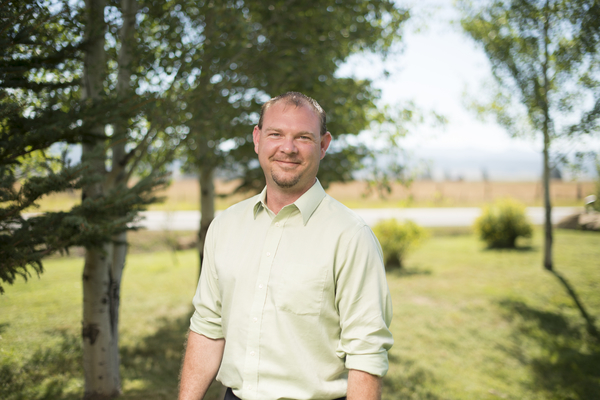Published January 27, 2021
As the Stibnite Gold Project continues to move through the permitting process and become closer to reality, we understand that more and more questions over its impacts arise. Many, if not all, of the answers to these questions can be found in the Draft Environmental Impact Statement (DEIS) released by the U.S. Forest Service. However, we know it is a lengthy document and it can sometimes be difficult to immediately find the answers you want.
If you ever have questions about our project, please reach out to us. We are always happy to sit down with community members and answer their questions.
Today, our team wanted to answer recent questions we received regarding our plans for handing sewage, toxic chemicals, garbage and recyclables at site.
In the project area how will community garbage be managed?
During construction and operations, we plan to collect trash and recycling in dumpsters, much like other local businesses and entities, and will be working with a waste transportation contractor to bring the waste from site to the county landfill or a commercial landfill. We do this on a much smaller scale today.
How will the economic impact to affected counties of the increase in garbage and recycling be assessed and made public?
Last fall, when the Valley County Commissioners approved a conditional use permit for our logistics facility, they included a requirement for our team to work with them on the logistical and financial implications of Midas Gold potentially utilizing these services.
How will the sewage of the 500 employees be managed and where will it go from the proposed Stibnite Gold Project and housing sites?
Midas currently has a permitted and constructed Class A wastewater treatment and reuse plant to support our exploration and early construction camp. The residual water from this plant is the highest quality recycled water that can be achieved, Class A, and will be used to support early reclamation activities on private land or discharged to a permitted septic drain field. The sludge residual will be managed by an independent sewage service contractor.
As the project advances, Midas will construct a larger more advanced domestic wastewater treatment plant to support workers housed onsite. Midas will obtain an Idaho Pollution Discharge Elimination System (IPDES) permit to discharge clean effluent under state water quality standards. Residual solids will be managed per IDEQ and state regulations.
What is the plan for coordinating transportation, storage, and disposal of hazardous waste?
Hazardous waste, generated onsite, will be managed and stored on site in accordance with state and federal regulations. Disposal will be at appropriately licensed landfills or waste processing facilities, by certified hazardous waste transporters.
Where will hazardous waste be hauled and where does it ultimately go? Does the county have the facilities necessary to handle hazardous waste?
Hazardous waste will stay at Stibnite until they can be shipped with a certified contractor to a specialized hazardous waste landfill. Valley County does not have the facilities necessary to handle this type of material.
What kind of county oversight will there be of all safety measures relating to hazardous waste transportation, handling, storage, and spills?
The transportation and storage of hazardous waste is all overseen by the State of Idaho. Because of the work we are already doing at site, we have emergency response, spill prevention control and countermeasure and fuel transportation management plans in place. Our current plans meet or exceed federal, state and county requirements and will be updated as the project progresses from exploration to operations.
How do you plan to coordinate hazardous materials emergencies with the counties on your route and any necessary route due to highway closures?
While we have had preliminary conversations with Valley County’s emergency response personnel, our coordination and support of joint trainings will increase as the project moves forward. We are committed to making sure the county has the information and resources they need regarding our project. Midas Gold currently has and will continue to expand its HAZWOPER response trained team members and equipment needed to be able to respond to emergency situations.
What state and federal regulations will you use to ensure worker safety?
The project is currently, and will remain through the initial stages of construction, under the oversite of Occupational Safety & Health Administration, better known as OSHA. During Mining operations, the mine site will be under Mine Safety & Health Administration (MSHA) regulation. Our offsite locations will continue to be regulated by OSHA standards. Midas has worked closely with the state’s consultation arm for OSHA, OSHCON, for the last six plus years and done many voluntary site safety inspections. These inspections look at safety conditions onsite at Stibnite and our offsite offices in Donnelly, as well as our safety policies and procedures, records and best practices.
What procedures have you put in place to protect human health, clean water, healthy soil, and breathable air at the worksite?
Over the last several years, Midas Gold has been building out an Integrated Environmental, Occupational Health & Safety Management system built upon the International Standards Organization (ISO) requirements for Environmental Management Systems and Occupational Health and Safety Management Systems. This integrated management system provides the backbone for all our standard operating procedures, environmental and occupational health and safety plans. Once fully implemented, these programs will be independently verified and audited against the referenced ISO standards upon which they are built.
Midas has also operated our onsite drinking water system to provide clean drinking water to employees and will continue to do so with testing and reporting per Idaho Department of Environmental Quality (IDEQ) requirements for a public drinking water system.
As part of implementing our Site Safety and Health plan, we periodically monitor air particulates for various work activities and implement appropriate changes, administrative controls or personal protective equipment as necessary to address any issues. Changes are implemented after careful review by a multi-disciplinary working group that includes Health & safety personnel, professional and non-professional staff as well as management to allow a diversity of input and assessment.
On site, who will be responsible for ensuring that hazardous materials will be kept and handled separately?
Midas Gold will be responsible for handling hazardous materials onsite according to regulations outlined by the Idaho Department of Environmental Quality and the federal Resource Conservation and Recovery Act. IDEQ will verify our records, perform periodic onsite inspections and audit our reporting requirements, which vary depending the type and quantities of waste being generated. All of these details will be carefully outlined in our Waste Management Plan.
For potentially hazardous materials onsite that are not waste, such as fuel and cyanide, there is an annual Tier II report we must submit to the state and county emergency response coordinator to indicate our onsite storage, rate of use and annual consumption. This information is used to inform emergency response personnel in the event they are called out to respond to an incident.
Who, unaffiliated with Stibnite or Midas Gold, will be responsible for the oversight of all the different aspects of waste and garbage management, and what procedure is in place for reporting to and updating county officials and the public?
The Idaho Department of Environmental Quality has regulatory oversite of waste management in Idaho. They will oversee the Stibnite Gold Project. More information can be found on their website: https://www.deq.idaho.gov/waste-management-and-remediation/.
Section 4.7 of the DEIS also provides information on our plans for handling, storing and transporting hazardous materials up at site and section 4.9 outlines our plans to treat sanitary waste. If you still have questions on any of these areas, please reach out to our team. We would be happy to meet with you.

